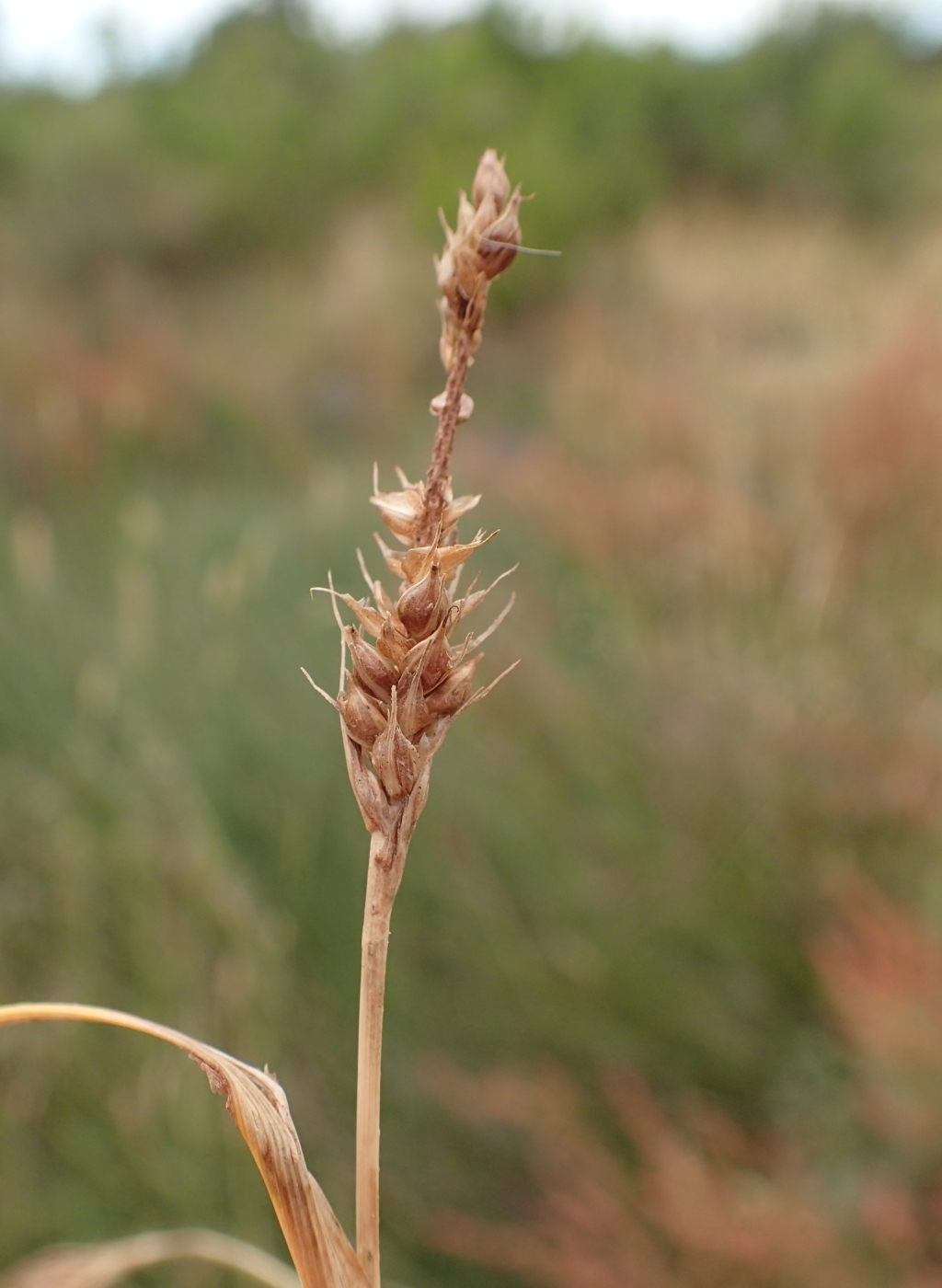Carex tasmanica
Kük. Curly SedgeRhizome short or long; shoots densely tufted. Culms erect, ± terete, smooth except just beneath inflorescence, (15–)20–70cm long but may greatly elongate in fruiting stage to 170 cm long, c.0.8 mm diam. Leaves exceeding culms but sometimes much shorter when culms fruiting, typically curled at apex, 1.5–1.7(–2.3) mm wide; sheath pale red-brown, minutely red-dotted; ligule obtuse, red-dotted. Inflorescence narrow, erect, 5–25 cm long, with 2–4 spikes solitary at nodes, the lowest spike often very distant from the rest; lowest involucral bracts exceeding inflorescence. Spikes sessile or shortly pedunculate, distant, erect at maturity, (1.5–)2–3(–4) cm long; upper 1 or 2 spikes male; lower 2 or 3 spikes female; glumes obtuse to retuse, often shortly mucronate, red-brown with paler midrib, sprinkled with brown or red brown striae; female glumes 2.2–3.5 mm long; utricles 3–3.7 mm long, 1.5–1.8 mm diam., ellipsoid, faintly numerous-nerved, glabrous, occasionally somewhat thickened, pale green to brown, red-dotted; beak 0.5–0.8 mm long, with apex bifid; style 3-fid. Nut ellipsoid to obovoid, trigonous, dark yellow-brown. Flowers spring.
GleP, VVP, WaP, DunT. Also Tas. Uncommon, confined to seasonally wet, heavy clayey soils immediately north of Melbourne (Craigieburn) and farther west (to Heywood near Portland).
The leaf tips are usually curled as in Carex bichenoviana but C. tasmanica differs in having the ligule and the thin portion of the leaf-sheath red-dotted, with mostly fewer spikes in the inflorescence, the utricle is red-dotted and thinner in texture and not as inflated, and the glumes are usually shorter and not strongly red-brown in colour.
Wilson, K.L. (1994). Cyperaceae. In: Walsh, N.G.; Entwisle, T.J., Flora of Victoria Vol. 2, Ferns and Allied Plants, Conifers and Monocotyledons, pp. 238–356. Inkata Press, Melbourne.
 Spinning
Spinning